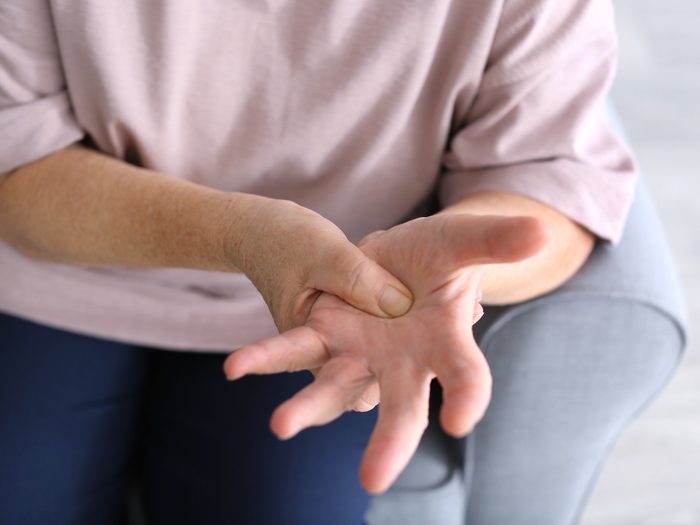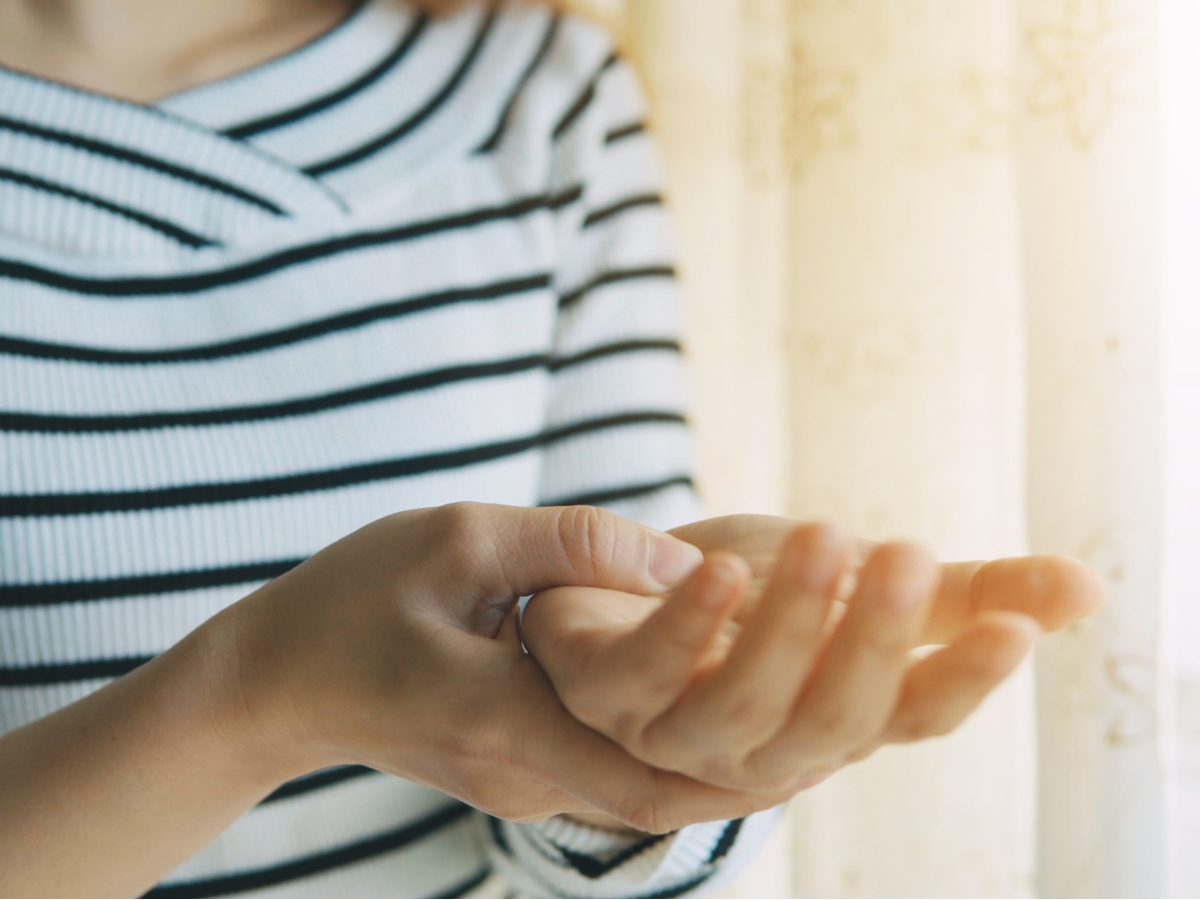
What’s Wrong with Me?
The patient: Rosa (name changed), a 42-year-old stay-at-home mom
The symptoms: Severe pain in both hands
The doctor: Dr. Isaac Shturman Sirota, cosmetic and reconstructive surgeon at Angeles Lomas Hospital in Mexico City, Mexico
Rosa first noticed a mild, prickling pain in her right hand in 2006. The joints in her ring and pinky fingers were stiff and her hand felt swollen, even though it looked normal. A few months later, the same soreness started in her left hand. For a long while, the busy mother of two young boys was able to carry on with her day-to-day life. But over the next several years, her hands got weaker. Unexpectedly, a book or mug would drop from her fingers. The pain gradually intensified until it was overwhelming.
“My hands felt as if they were burning,” Rosa recalls. A routine task, like activating the turn signal on her car, became agonizing. “In the night, I would cry in pain,” she says. Rosa went from one specialist to the next. They all ran tests, always with the same result: nothing seemed to be wrong.
Discomfort in the fourth and fifth fingers is a typical sign of irritation and compression somewhere along the ulnar nerve, which runs from the elbow, where we know it as the “funny bone,” to the hand. It can develop after repetitive bending of the elbow, or even the constant pressure of hands against the handlebars of a bike. Most of the time, ulnar-nerve compression can be fixed with surgery.
Usually, however, the condition causes some degree of numbness in the fingers—Rosa had only pain—and, when she underwent a nerve-conduction test to diagnose compression, it came back negative.
Rosa’s doctors prescribed anti-inflammatory medications to try to ease her agony, but they didn’t help. The pain only went away when she wore rigid wrist splints. “Everyone kept telling me I was fine, that nothing was abnormal in my tests,” she says, even though she could barely use her hands anymore. “I was sad and in so much pain. I thought I was going to stay like that forever.”

A Startling Discovery
Ten years after the onset of her symptoms, in the summer of 2016, Rosa made an appointment with Dr. Isaac Shturman Sirota, a surgeon at Angeles Lomas Hospital in Mexico City who had treated other members of her family. Even though Rosa’s testing didn’t indicate a compression, Shturman Sirota couldn’t help noting evidence of one: the weakness in her hands and a prickly feeling when the doctor tapped her wrist—a sign that the nerve was irritated. Also, when Rosa kept her wrists flexed for several seconds by pressing the backs of her hands against each other (called the Phalen manoeuvre), it brought on more of the same pain.
Shturman Sirota believed she needed surgery. “I don’t really care about the tests,” he says, “because many times I have seen positive tests where there’s no problem and negative tests where there is a problem.”
The doctor had to convince his nervous patient that this was the right course of action. “I had basically no choice, but I didn’t like the idea,” says Rosa, who has intense anxiety before and after medical procedures. “I was afraid something would go wrong. After all, we’re talking about hands.” It didn’t help when her doctor admitted he wasn’t at all sure what he was going to find.
A few weeks later, Shturman Sirota operated on Rosa’s right wrist. It looked almost perfectly normal inside. “I didn’t find any segment of the nerve that had changes from compression,” he says. The only irregularity was a benign fatty tumour, or lipoma, barely a millimetre wide, nestled against the ulnar nerve. He removed it and sent it for examination, guessing it was causing the symptoms. Even though the tumour looked too tiny to have much impact, there was no other explanation.
The theory seemed bolstered by the fact that, after surgery, Rosa was transformed. Within 24 hours, her symptoms were 90 per cent improved, and they continued to diminish as she recovered. “The pain was completely gone,” she says. She also regained her strength in the hand.
Here are more diseases doctors are most likely to miss.

The Full Story
It was the surprising pathology report, two days after the surgery, that told the full story. Under a microscope, this little lipoma was far from ordinary. It was actually covered in Pacinian corpuscles, highly sensitive structures with nerve endings. These are normally found in our skin to enhance our sense of touch. In this case, they had made the fatty tumour extraordinarily sensitive.
Shturman Sirota can’t guess why this happened to Rosa. In some very rare cases, Pacinian corpuscles have been known to grow abnormally after an injury, such as a dog bite on a finger. But its discovery in Rosa was even odder. “We didn’t find anything about this in the literature,” he says. Five months later, when his patient had summoned the courage for another surgery, he removed a matching lipoma from Rosa’s left wrist.
The story may not be over. Although Rosa’s initial symptoms haven’t returned, at the end of last year she noticed a prickling soreness in the thumb, index and middle finger of both hands. “My fingers aren’t hurting with the same intensity, and I haven’t lost any strength, nor is it bothering me every day,” Rosa says. “But that’s how it all started last time.”
Shturman Sirota suspects that Rosa now has Pacinian corpuscles on her median nerve, a different part of the arm, and may need more surgery. At least it’s no longer a medical mystery—and, thankfully, he knows how to treat it successfully.
Next, find out what rare condition was causing this athlete’s stabbing pains.